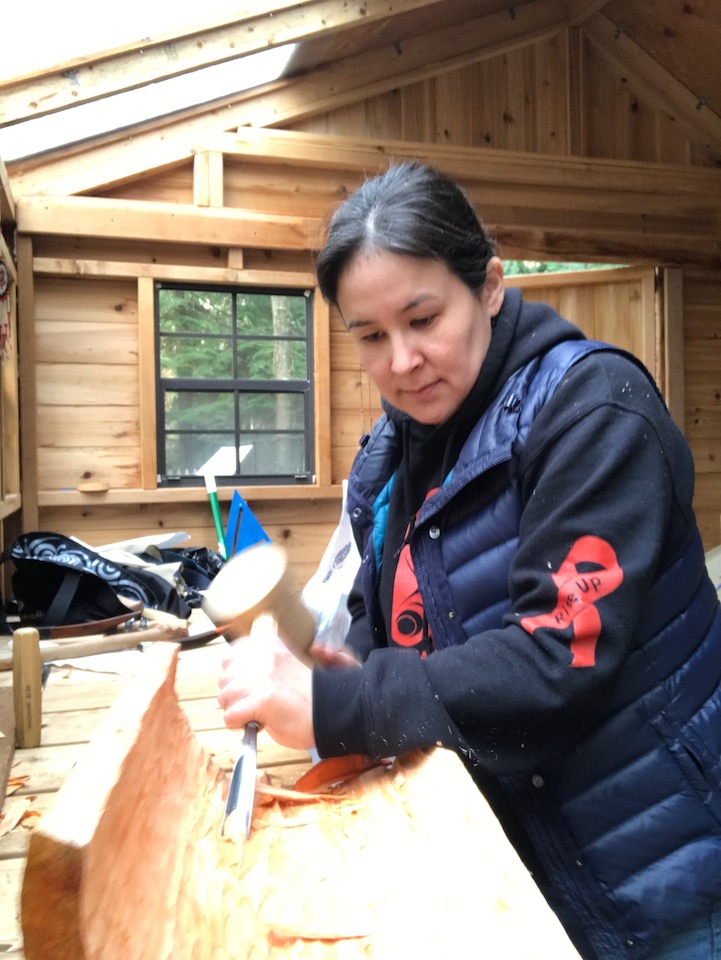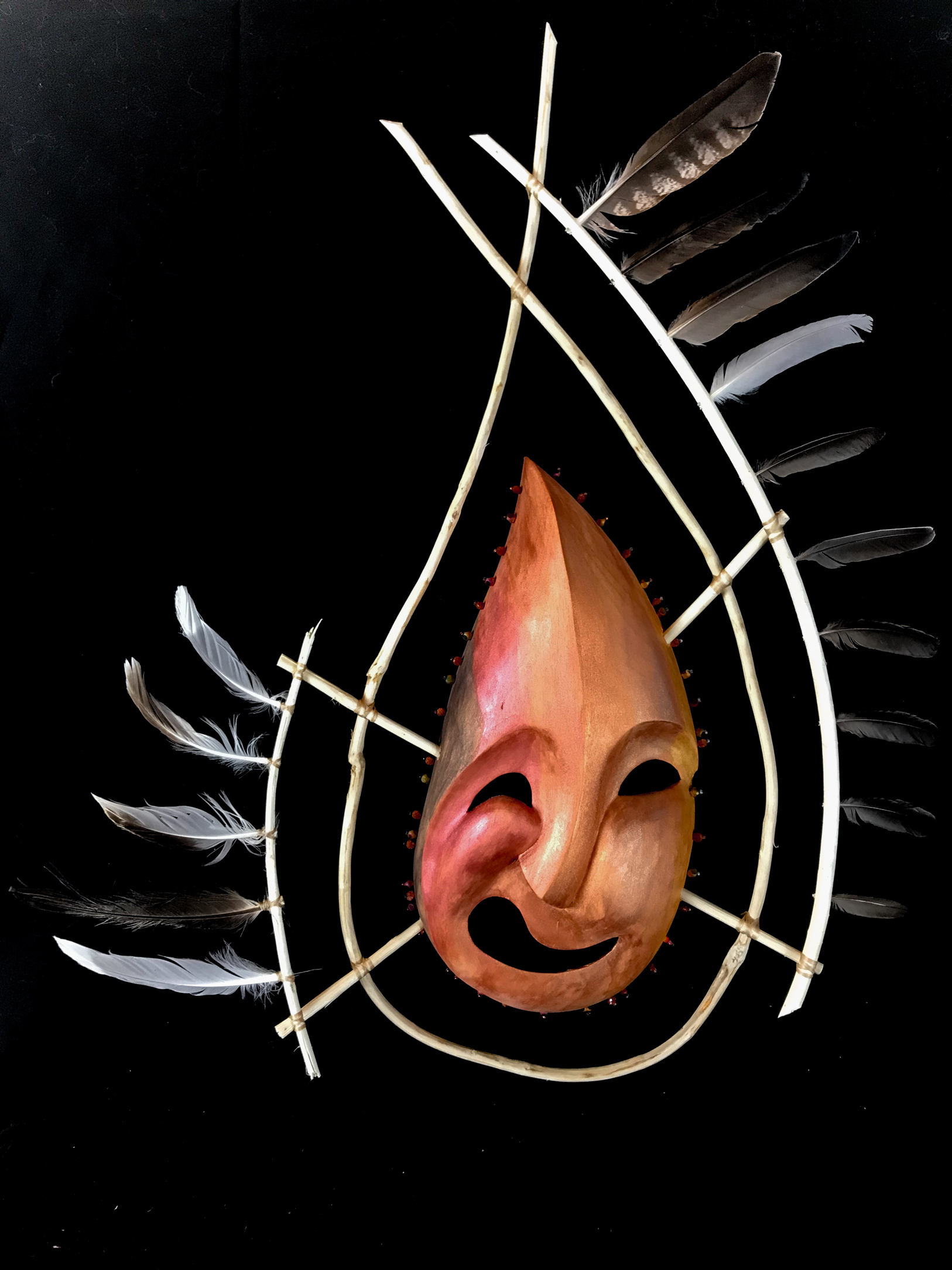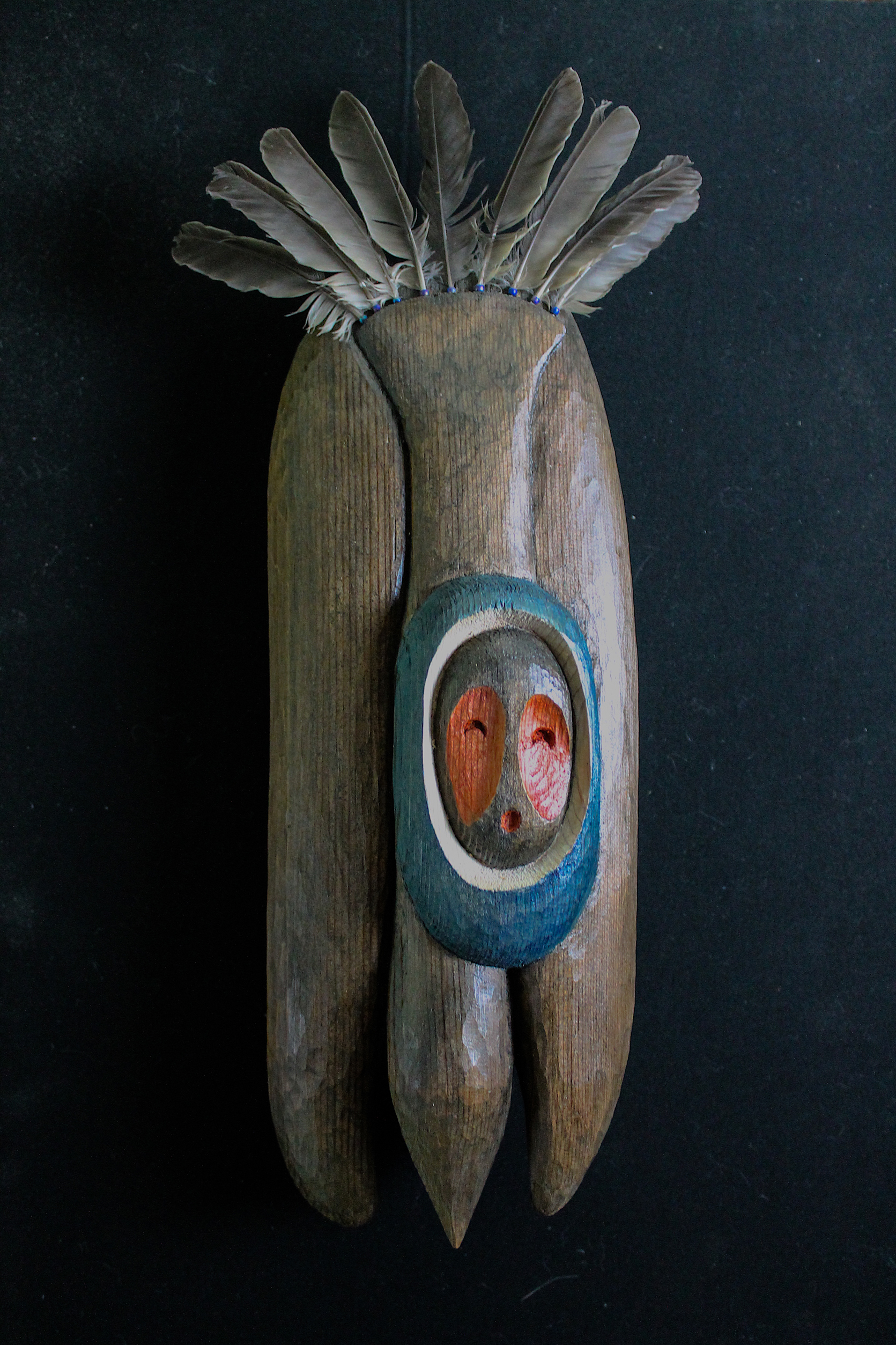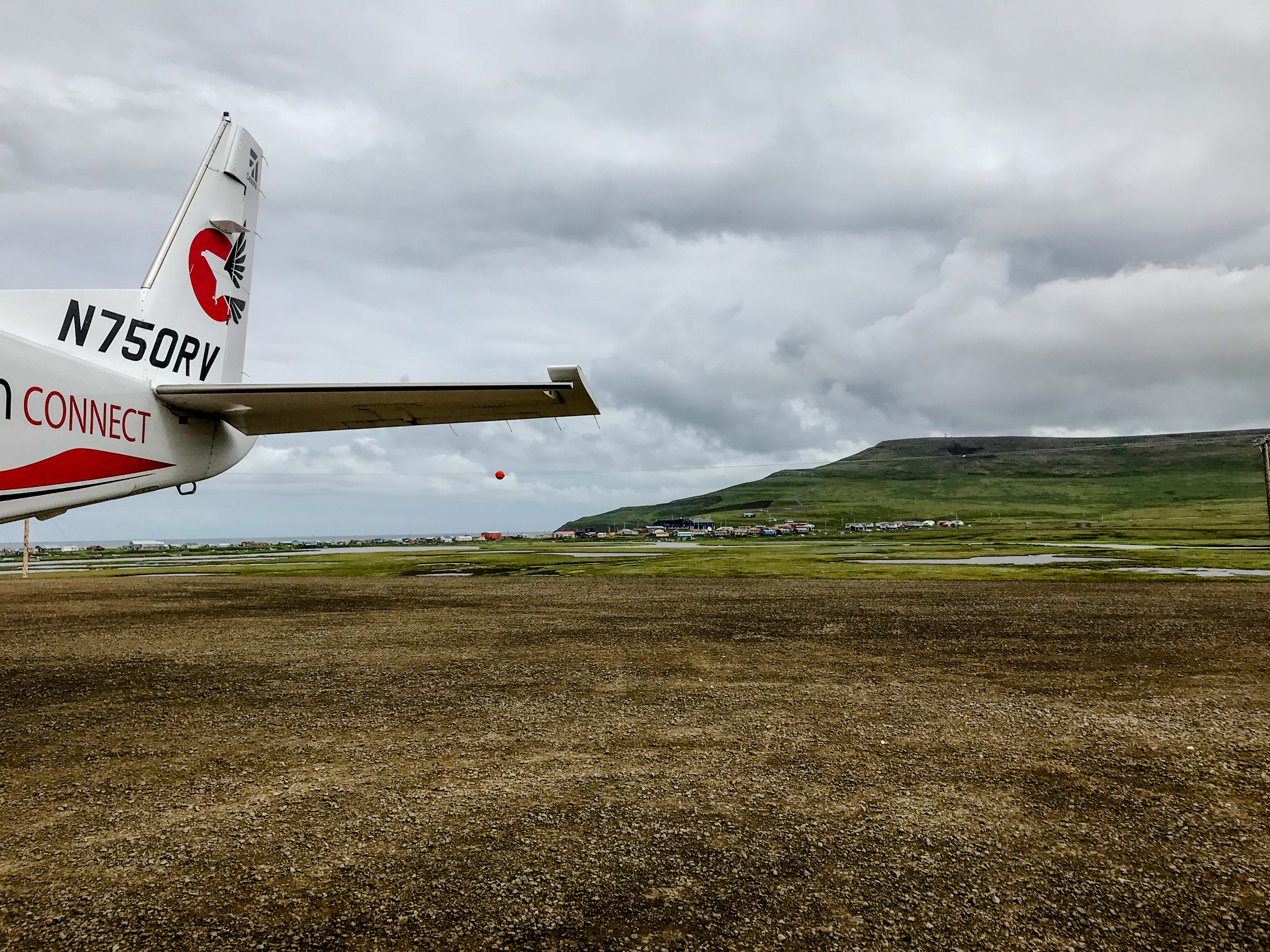
Innovation and adaptation: Artist Jennifer Angaiak Wood on contemporary Yup’ik mask-making
By Francesca Du Brock, Chief Curator
Artist Jennifer Angaiak Wood remembers watching her grandmother in Tununak make grass baskets. Her grandmother was so familiar with the process she wove by feel and didn’t have to look at the grass as she added more to the coil. A finished basket held by the lid would stay attached to the body of the basket with only pinpricks of light shining through the tightly-woven strands. Her grandmother’s time-consuming and precise weaving made a deep impression on Wood. She cites this experience, as well as the practice of closely observing the world around her, as foundational to her work and how she carves.
Wood’s work is expressive of a range of interests and influences cultivated between her childhood in Fairbanks, summers spent in Tununak, and her current life in the Seattle area, where she has picked up skills and techniques from Northwest Coast carvers. Drawing on traditional knowledge and aesthetic forms of Yup’ik culture and adapting them to present-day conceptual concerns, she creates masks that speak to climate change, Indigenous lifeways, civil rights, astronomy, and her personal experiences. Traditional Yup’ik masks were carved from driftwood and were created for specific purposes, including important ceremonies and rituals. Wood studies these masks and translates them into works she carves from basswood, alder, and red and yellow cedar. Her masks are often rounder and more volumetric than traditional masks and Wood is conscientious about the intention she puts into them, saying, “I borrow forms and concepts but I try never to outright copy. I want to be careful I’m not tapping into something I’m not supposed to be accessing on a spiritual level.”

The artist carving.
She began her path in carving under the tutelage of her high-school art teacher, Ron Manook. He impressed upon her the importance of art as a carrier for culture, and the idea that making art is a privilege that must be earned. She says, “for him, this was serious business and he had to earn every moment that he had, and so that’s always going through my head…I need to be earning the work that I’m doing.”
As a contemporary Native artist, Wood is often working against paradoxes and biases. Viewers are sometimes surprised to find that Indigenous people “still exist,” while others may question the validity of Wood’s work as authentic or “traditional.” For Wood, these comments and questions have a way of “conveying this idea that Indigenous people are not supposed to be stepping out of historic bounds. We’re not authentic if we’re not doing what our people have always done—but what our people have always done is innovated and adapted.” A big part of Wood’s drive as an artist comes from the desire to dispel this idea of her culture as either static or extinct.

Growth, 2020. Alder, willow, blackberry root, feathers, beads, pigments, imitation sinew.
Climate change and the havoc it’s wreaking on coastal regions of Alaska is a central concern in Wood’s work. Her ancestral village of Tununak is not far from Newtok, a village facing relocation due to melting permafrost and erosion. Climate change is also affecting the migration of animals critical to a subsistence way of life rooted in interdependence with land and animals. Wood emphasizes that these are “very, very ancient lifestyles” being dismantled by environmental stressors. She believes that it is part of her obligation as an artist to help raise awareness about these issues.

Short-Tailed Shearwater Yua (Spirit), 2018. Red cedar, pigments, feathers, beads.
Wood describes her carving practice as “a negotiation between me and the wood.” Sometimes she sets out with a predetermined concept, and sometimes she must respond to the wood and follow its grain or incorporate natural eccentricities into her design. Her choice of subject matter reveals similar negotiations, between spirit and body, past and present, joy and sorrow. Wood asserts “the continuance of Native people as modern people, who just so happen to have a very long connection to the land on which they are living. I think that can’t be ignored or taken for granted—how important that connection is.”

Image of Tununak from the airstrip, 2018
This winter, with support from The CIRI Foundation, the Anchorage Museum will be hosting four virtual artists-in-residence. Follow Jennifer Angaiak Wood’s artwork and process through January. Check out her work @yupikjen on Instagram and Facebook, and tune in to her livestream studio demo on the Anchorage Museum’s Facebook page on Wednesday, January 27th at 12:00pm.
Header image: Jennifer Wood and her grandmother, Susie Angaiak